Although they have similar business objectives and address similar challenges, customer experience and eCommerce have different degrees of association with customers. What does each concept mean, what is the difference between them, and when is each applicable? Read on to learn more.
What Is eCommerce?
Ecommerce is the company’s activity of selling online. Focusing heavily on technical aspects of the activity, eCommerce usually limits customer relations to customer service — the support that a company provides before, during and after the purchase, as requested by the customer while moving down the funnel. Accordingly, eCommerce can be broken down into three stages of client interaction:
- Pre-sale: sharing information on product, prices and purchase conditions
- In-purchase: assistance in making the right choice and with various technical aspects, such as payment, refund, delivery, etc.
- After-sale: helping with product- or service-related information and addressing claims
So, in eCommerce, customer interaction starts right when the customer decides to make the purchase and lasts until the purchase is made (and sometimes after). Typically, these interactions are initiated by the customer.
The most common ways brands deliver customer service in eCommerce are:
- messengers
- social networks
- site chatbots
- emails.
SaM Solutions offers a wide range of platform-based and from-scratch ecommerce development services that help you reach your digital sales objectives.
What Is Customer Experience?
Customer experience (CX) in commerce is all about creating a pleasant and comfortable interaction between a brand and its clients that lasts for the entire customer lifecycle and spans all channels and touchpoints.
Why is CX important and why should a company go beyond customer service in eCommerce to prioritize customer experience? The answer is because of changing buyer patterns. In today’s era of highly competitive markets, buyers expect companies to be more concerned about their needs than they are themselves. Research says that 73% of customers expect companies to understand their needs and expectations and 33% of customers abandon a brand because of a lack of personalization.
There are three essential components of seamless CX: the customer journey, brand touchpoints and customer environments (physical or digital).
Having much in common with eCommerce, CX has an edge on it with respect to customer centricity. Instead of regarding a sale as the criterion of success, CX prioritizes customer satisfaction — making experience meet expectations. When markets become oversaturated with competing brands, many companies double down on personalized CX, which means any piece of information that they provide to clients is highly user-specific.
Although customer experience is endless and exists even when there is no obvious interaction between a brand and its clients, it can be roughly separated into the following stages:
- Pre-sale: proactive and relevant sharing of information and assistance across all physical and digital channels, including in-store support, advertising and promotions, web experience and engagement, etc.
- In-purchase: client’s experience of making a purchase, which includes decision-making, payment, checkout and delivery
- After-sale: client’s experience after the purchase, such as product quality, ease of use, maintenance and support and their feedback
So, CX starts with brand discovery and lasts throughout the relationship of the company with its clients.
The examples of good CX are endless, and the rule of thumb is to make a client as comfortable as possible, whether while making a payment, browsing a website or just receiving an ad.
Customer Experience vs. eCommerce: What Is the Difference
As mentioned, these two concepts have a lot in common, especially regarding the purpose they serve: the facilitation of online purchases. Both CX and eCommerce are aimed at supporting clients throughout their journey and encouraging conversion, loyalty and retention. So, what are the differences between them? Let’s figure it out.

Lifelong vs. On-Demand
In eCommerce, the interaction starts with demand, when clients approach a company to get information, make a purchase or resolve an issue; it stops once the client’s request is addressed.
As CX aims to accompany clients through the whole journey, it starts long before customer service in eCommerce does. The interaction begins when clients discover the company through any communication channel it uses (social media, ads, search engine results and others) and remains activated until the end of the customer lifecycle. Quite often, historic data helps companies rekindle relationships with lost clients by helping them provide a more personalized experience.
Proactive vs. Reactive
Traditional eCommerce is basically reactive: it serves customers on their request when they approach a company at any stage of decision-making and brand interaction via any communication channel in use.
The customer experience strategy is more about anticipating clients’ needs and proactively addressing them, even before they are aware of these needs themselves. So, CX-powered companies don’t wait for customers to approach them — they foresee their requests and ensure their expectations are met.
Holistic vs. One-Off
The customer relationship in eCommerce is narrowed down to companies serving customers only after being approached — that is, providing information or assistance to a specific client who makes a query. After the query is settled, the relationship may be terminated. It’s safe to say that eCommerce has a transactional character.
CX provides a comprehensive approach to the customer relationship that is centered on the client throughout the entire brand interaction history. A brand accompanies its users in all aspects and via all channels at the same point of time, thereby creating a holistic user-centered ecosystem and digital customer journey.
Company-Wide vs. Limited Responsibility
Customer service is a separate function and a separate department in online commerce. It is the responsibility of a dedicated department head.
With the introduction of CX culture, customer service is the responsibility of a company’s executive and the goal of the entire organization and all its members and departments.
Comprehensive Technical Solutions vs. Simple CRM
The number of consumers who buy online is skyrocketing, so eCommerce is impossible without a digital solution that keeps track of the company’s clients and their interactions with it. Customer relationship management (CRM) systems are the one-stop shop that provides data on all the company’s clients and their interactions.
Companies that are committed to the culture of CX need a comprehensive overview of each specific client, his or her journey and preferences. Such a company needs more than a CRM — it needs a holistic solution that gathers all analytical data from client interaction touchpoints, including those from marketing, sales, and finance and accounting, on a single platform, in real time. Based on a 360-degree client overview, a CX solution creates personalized ways of accessing users and establishing a loyal and long-lasting relationship with them.
A Piece of Advice
With many successful CX and eCommerce implementation projects under the belt, we’d like to take the liberty of offering a piece of advice to companies that are thinking about adopting CX and eCommerce.
Take CX Seriously
Online business is no longer limited to transactions and purchases. Today, buying on the Internet should be accompanied by user-centricity and concern about buyer experiences.
In order to encourage retention, all aspects of customer interaction need to be taken into account — the way a client discovers a brand, brand consistency, proper context of experience delivery and the capability to foresee the client’s needs.
Personalize Experiences to Encourage Loyalty
In the face of high competition, it’s not online commerce that encourages retention and loyalty, but personalization. Making both prospects and existing clients feel comfortable and taken care of by your company, at every step of their journey and through every channel they use, will maximize your chances for high retention and loyalty. Fortunately, today’s AI, ML, AR, VR and other techniques and technologies offer endless opportunities for companies to provide personalized digital customer experiences.
Personalize Intelligently
Be sensible and rational with personalization; excessive, pushy efforts may cause user exasperation. If your US client is in Germany at the moment, that doesn’t mean he or she should receive your mailout in German.
CX Software Is a Must-Have
Well-thought-out software is indispensable if you look for easy and efficient client and experience management. Let’s have a look at the most prominent solutions based on the Forrester Wave’s Digital Experience Platforms research for Q3 2019 — SAP, Oracle, Adobe and Salesforce.
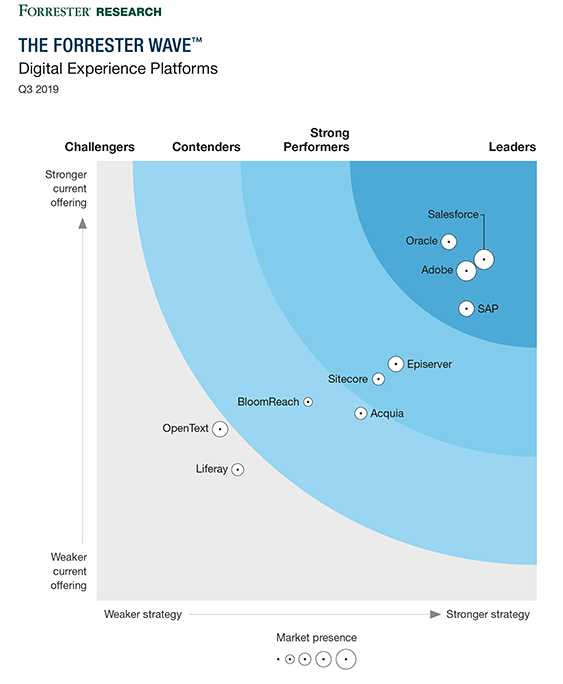
Source: adobe.com
SAP

As far as seamless CX and context personalization are concerned, SAP Customer Experience (CX) Suite (former SAP Hybris) is second to none. We know this by experience, as SaM Solutions is a long-standing SAP partner. This powerful platform brings together software for sales, customer service, marketing and online commerce, thus providing complete visibility of all clients and a user-specific way to approach them.

SAP CX Suite includes the following components:
- SAP Commerce Cloud — an all-in-one omnichannel commerce solution for B2C, B2B, and B2B2C businesses equipped with industry-specific accelerators and product management capabilities
- SAP Sales Cloud — a full-fledged sales software unit that enables CPQ, sales automation and complete control of the buying journey
- SAP Marketing Cloud — an advanced solution that consolidates the company’s marketing information and experience management tools to drive engagement and effectiveness
- SAP Service Cloud — an end-to-end customer service management solution that unifies query processing across all channels and provides advanced field service management
- SAP Customer Data Cloud — a reliable solution for personal data processing that helps address data protection regulations while engaging customers
As a result, the platform ensures the ultimate customer orientation, short time-to-market, quick adaption to client requirements and high integration capabilities.
Adobe

Adobe Experience Cloud (AEC) is an offspring of Adobe Inc., a company that is famous for its design software. The Adobe Experience Cloud includes the following products:
- Adobe Experience Manager for customer-specific content and digital asset management
- Adobe Campaign for the omnichannel delivery of individually tailored content
- Adobe Audience Manager for advanced audience segmentation
- Adobe Advertising Cloud for ad management and consolidation of all media assets, inventory and data
- Commerce Cloud for advanced eCommerce, a capability powered by Adobe’s integration with Magento Commerce
- Marketo Engage for harmonization of marketing and sales
- Adobe Target for personalization and optimization of experience
- Adobe Analytics for data collection from all touchpoints of the consumer journey, its all-round analysis and reporting
With knowledge about how to engage UX and UI and equipped with cutting-edge Marketo and Magento solutions for online sales, the vendor successfully created this AEC platform to provide seamless digital CX.
Oracle
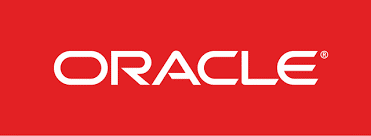
A provider of a wide range of software products and services, Oracle has an advanced customer experience solution under its belt — Oracle Fusion Cloud CX. This leading CX platform helps companies integrate data, processes and workloads on a single CX platform, gain insights and drive engagement. The platform includes the following components:
- CX Marketing to encourage intelligent, omnichannel B2B and B2C marketing that relies on personalized content and strategies
- CX Sales to encourage buyer-responsive selling by marrying planning, sales execution and user-specific insights
- CX Commerce to create a supportive selling and buying environment for B2B and B2C commerce
- CX Service to personalize customer service at every touchpoint
Being Oracle’s partner, SaM Solutions understands that these CX products taken together allow companies to create a seamless environment for client interactions, manage CX in real time and gain valuable insights that help them understand their customers.
Salesforce

A leading provider of CRM software, Salesforce created a customer relationship infrastructure that has evolved into a holistic CX ecosystem — Customer 360. This CX platform includes the following products:
- Marketing Cloud — an intelligent marketing platform that creates a personalized experience based on advanced data management and marketing automation
- Commerce Cloud — an eCommerce platform that builds personalized buyer journeys for B2B and B2C
- Sales Cloud — an advanced selling and buying tool that enhances productivity and improves client searches
- Service Cloud — a solution that streamlines customer interaction through the entire lifecycle
- Salesforce Platform — a unified platform that enables companies to create CX-focused IT environments by building their own software or customizing third-party apps
Relying on powerful analytics, the combination of these solutions helps businesses build customer-specific sales ecosystems to create frictionless CX and efficiently interact with clients.
CX vs. eCommerce: Who Wins the Battle?
There’s no right answer when it comes to deciding whether a traditional eCommerce solution or a comprehensive CX platform is better. The choice depends on many criteria, such as business scope, financials, expectations from the implementation of a solution and the goals it should help achieve.
Regardless of which one is currently the better option, the future belongs to CX. To learn more about potential SAP benefits for your business, the solutions it can provide and the specifics of its implementation, feel free to contact our SAP experts.



























 5 Reasons Why Your Business Needs a Mobile eCommerce Application
5 Reasons Why Your Business Needs a Mobile eCommerce Application Using Salesforce to Improve Your Sales Pipeline: Five Tips
Using Salesforce to Improve Your Sales Pipeline: Five Tips Cross-Platform Mobile Development: Five Best Frameworks
Cross-Platform Mobile Development: Five Best Frameworks How to Develop Custom Accounting Software
How to Develop Custom Accounting Software 10 Best Web Development Frameworks in 2024
10 Best Web Development Frameworks in 2024
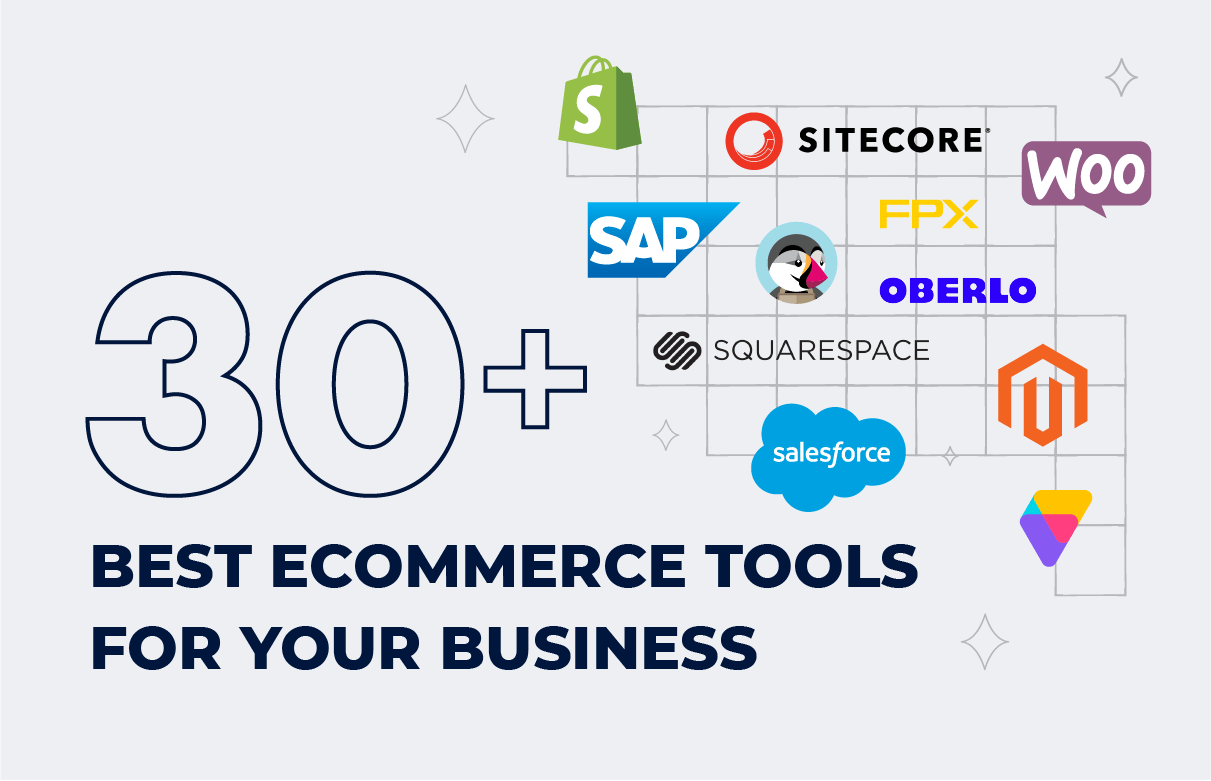


![What Is Ecommerce Customer Service? [Including 8 Best Practices]](https://www.sam-solutions.com/blog/wp-content/uploads/Customer-Service-in-eCommerce.png)



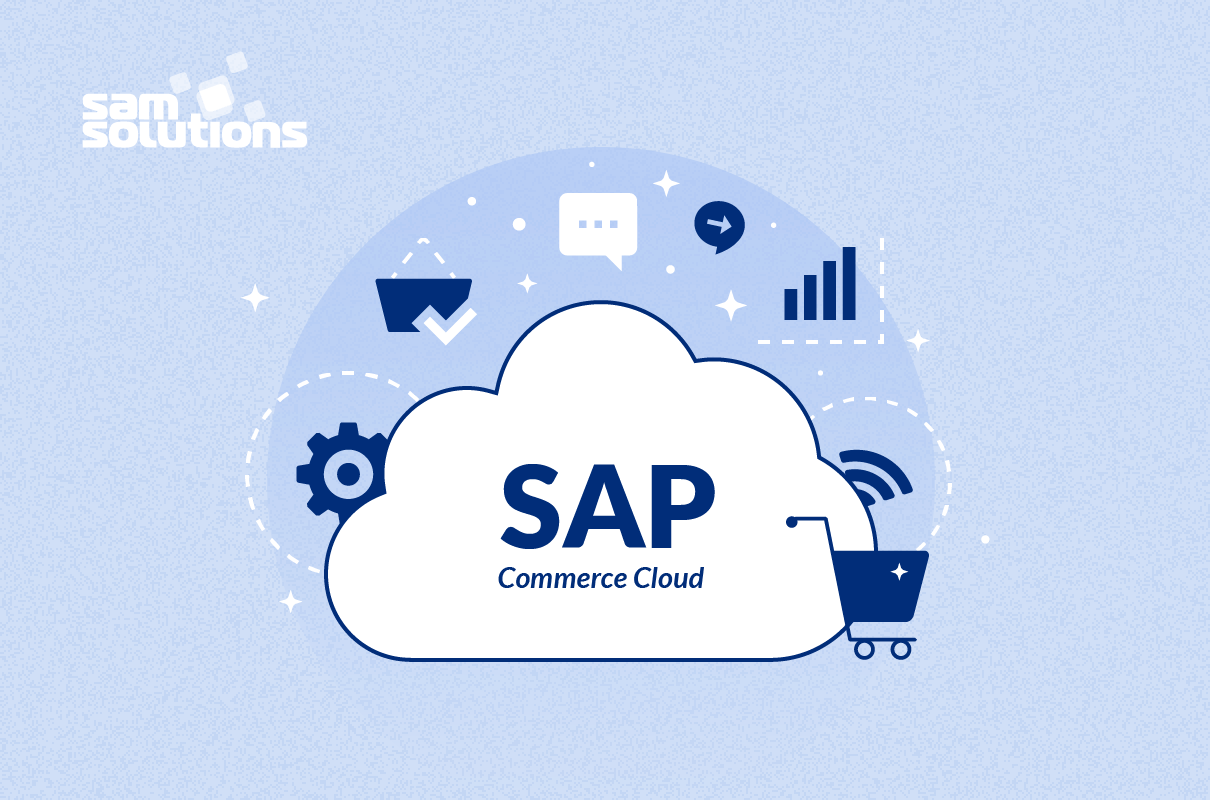


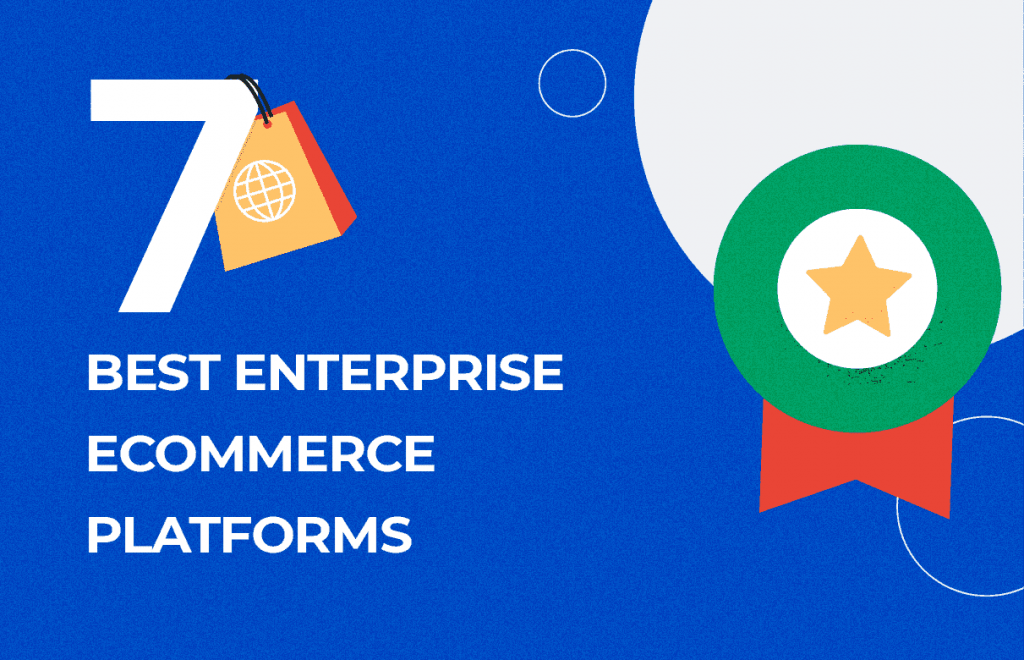

 Top 30 Ecommerce Tools to Elevate Your Business in 2024
Top 30 Ecommerce Tools to Elevate Your Business in 2024 5 Best Tools to Improve Embedded Software Testing
5 Best Tools to Improve Embedded Software Testing Why React and Node.js Are the Top Technologies for Creating High-Performance Web Apps in 2024
Why React and Node.js Are the Top Technologies for Creating High-Performance Web Apps in 2024 10 Best IoT Platforms for 2024
10 Best IoT Platforms for 2024
Thank you, I’ve just been looking for information approximately this topic for a while and yours is the greatest I’ve found out so far.
It’s amazing to visit this web page and reading the views of all colleagues about this post, while I am also zealous of getting know-how.
Digital customer experience is the essence of any successful marketing strategy, this article really gave me a clear overview of how and what is digital transformation and how exactly can companies make sure they implement it in their day-to-day strategy to create a much better cx relationship hence a perfect way to stand alone in a competitive market.
Looking forward to more of such amazing articles.